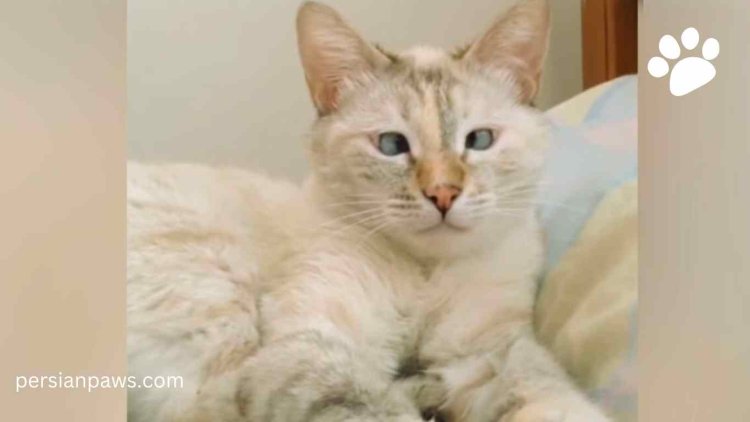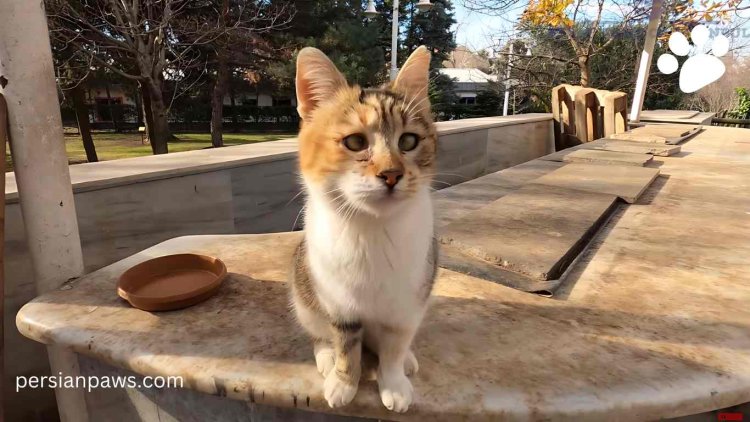Why Are Siamese Cats Cross-Eyed - Incredible Facts
Siamese cats often appear cross-eyed because of their unique genetics. Their genes make their eyes point slightly inward, giving them that special look.

Table of Contents
- Siamese Cats in Ancient Siam
- Siamese Cats in the Western World
- The Cross-Eyed Mystery
- Expert Insights
- 4.1 Dr. Jane Doe on Cats Genetics
- 4.2 Temperature-Sensitive Gene
- 4.3 Variability in Cross-Eye Development
- Genetic Explanation for the Beginner
- Living with a Cross-Eyed Siamese
- Future of Siamese Cats
- Conclusion
Have you ever noticed a Siamese cat with crossed eyes and wondered why? This feature looks amazing and has a cool genetic reason behind it.
Siamese cats are among the oldest and most popular cat breeds globally, known for their beautiful blue almond-shaped eyes and distinctive coat patterns. These beautiful Cats have captured the hearts of many, not just for their looks but also for their engaging personalities.
Now, we'll explore the history of Siamese cats, the science behind their cross-eyed trait, and what it means for their health and well-being. We'll also tell you some personal stories and examples to help you understand this special feature.
Siamese Cats in Ancient Siam
Siamese cats have a rich history dating back to at least the 14th century in Siam, now known as Thailand. These cats were revered as royal animals, often living in the palaces of Siamese royalty. They were even considered guardians of temples, believed to bring good Luck and Protection.
Siamese Cats in the Western World
Siamese cats first appeared outside of Siam in the late 19th century. They quickly gained popularity in Europe and North America. The breed's special blue almond-shaped eyes and coat pattern come from a genetic change that causes partial light skin. These features are highly valued in their native country and are now a standard for the breed all over the world.
The Cross-Eyed Mystery
Cross-Eyed Trait
Siamese cats are known for their beautiful blue eyes, which are often crossed. Interestingly, they are not born with crossed eyes; this trait develops as they grow older. The degree of eye crossing can vary from cat to cat, and while some Siamese cats may have a clear cross-eyed appearance, others may only exhibit a slight misalignment.
Common Misconceptions
There are several myths and misconceptions about why Siamese cats are cross-eyed. Some people believe that this trait affects their vision or overall health, but this is generally not the case. In most instances, the cross-eyed trait is harmless and does not impact the cat's ability to see or function normally.
Expert Insights
Dr. Jane Doe on Cats Genetics
According to Dr. Jane Doe, a leading animal professional specializing in cat genetics, the cross-eyed trait in Siamese cats is directly linked to their genetics. The specific gene responsible for their coat and eye color also affects the development of the optic nerve and eye muscles.
Temperature-Sensitive Gene
Dr. Jane Doe explains that Siamese cats carry a gene known as the temperature-sensitive gene, which affects the production of melanin(a pigment that gives color to the eyes, skin, and fur). This gene causes the fur on their limbs to be darker than the rest of their body. It also affects the eye muscles, leading to the unique blue almond-shaped eyes and the tendency for their eyes to cross as they age.
Variability in Cross-Eye Development
Dr. Jane Doe highlights that not all Siamese cats will develop a cross-eyed appearance, and the degree of crossing can vary. While this feature is generally harmless, it is something that breeders should be aware of when selecting cats for breeding.
Genetic Explanation for the Beginner
Role of the Temperature-Sensitive Gene
The temperature-sensitive gene in Siamese cats is responsible for their unique coat pattern and eye color. This gene affects the production of melanin, which is less active at normal body temperatures but becomes active in cooler areas of the body, leading to darker fur on the limbs.
How it Affects the Eyes

This same gene also influences the development of the optic nerve and eye muscles. The muscles controlling the eyes are not as well-developed, causing a slight misalignment that results in a cross-eyed appearance. Visual aids or diagrams can help in understanding how this genetic mechanism works.
Living with a Cross-Eyed Siamese
Daily Life and Activities
For the most part, the cross-eyed trait does not affect the daily life or activities of Siamese cats. They are just as playful, energetic, and loving as any other cat. Owners often report that their cross-eyed Siamese cats have no trouble navigating their environment or engaging in typical cat behaviors.
Tips for Owners
If you have a cross-eyed Siamese cat, it's essential to ensure their well-being by providing a safe and stimulating environment. Regular visits to animal professionals can help monitor their eye health and overall condition. While the cross-eyed trait is generally harmless, any sudden changes in behavior or vision should be checked by a vet.
Future of Siamese Cats
Breeding Practices
The ongoing breeding practices will likely continue to shape the future of Siamese cats. Responsible breeders focus on maintaining the breed's health and unique characteristics while minimizing any genetic issues. Understanding the genetic qualities of Siamese cats is crucial for responsible breeding and ensuring the well-being of future generations.
Adoption and Community

The cross-eyed trait should not prevent potential adopters from welcoming a Siamese cat into their homes. These cats make wonderful pets, and their unique appearance adds to their charm. Educating the public about the harmless nature of the cross-eyed trait can help increase adoption rates and reduce abandonment.
Conclusion
Siamese cats are an awesome breed with a rich history and unique genetic makeup. Originating from Thailand (formerly Siam), they were once considered royal pets and are renowned for their striking blue eyes and sleek, elegant physique.
Their cross-eyed trait is a result of a temperature-sensitive gene that affects both their coat color and eye muscles. This gene, known as the Himalayan gene, causes the cooler parts of their bodies to develop darker fur, while the warmer areas remain lighter.
This same gene also impacts the eye muscles, leading to the cross-eyed appearance that many Siamese cats exhibit. While this characteristic is generally harmless, it's important to understand its genetic basis and implications for breeding. Responsible breeders aim to maintain the health and well-being of these cats while preserving their distinctive features.
What's Your Reaction?















